Korean BBQ Meatballs You Can Make on a Weeknight
Alright, folks—if you’re looking for something easy, loaded with bold, addictive flavour, and guaranteed to be a crowd-pleaser, these Korean BBQ meatballs are your ticket. We’re talking one pan, 20 minutes, and a total flavour explosion—sweet, salty, sticky, and just the right amount of heat. This Korean meatball recipe is on heavy rotation in our kitchen, and once you give them a go, they’ll probably hit your weekly dinner list too. You can serve these Korean meatballs over sticky rice, in a bao bun, or as a party snack. This Asian meatball recipe is great for everyone. Kids and adults love them, and they reheat easily. Let’s get into it!

Recipe
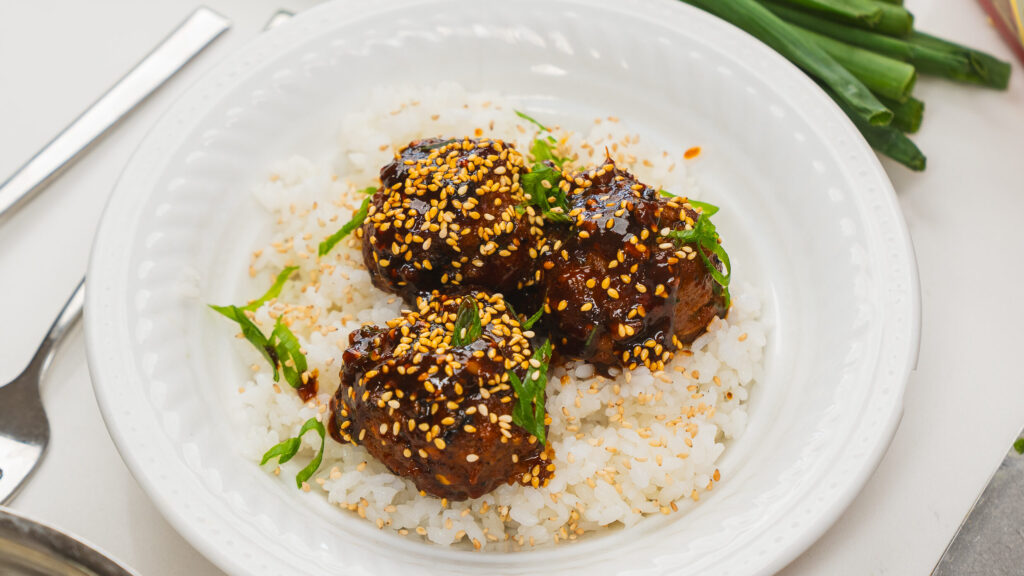
Korean BBQ Meatballs
Ingredients:
For the Meatballs
- 1 lb ground beef
- 6 cloves garlic, minced
- 1 tbsp minced ginger
- 3 green onions, finely chopped
- 2 1/2 tbsp gochujang
- 2 tbsp soy sauce
- 1 tsp sesame oil
- 2 tbsp maple syrup
- 1/2 cup panko
- 1 egg
For the Sauce
- 1 clove garlic, minced
- 1/2 cup soy sauce
- 2 tbsp maple syrup
- 1 tbsp gochujang
- 1 tbsp rice vinegar
- 1 tbsp sesame oil
- 1 tbsp cornstarch + 2 tbsp water (to make a slurry)
Instructions:
- In a large bowl, mix together all meatball ingredients until just combined—don’t over mix.
- Form into 20 meatballs.
- Heat a non-stick pan over medium heat. Add meatballs and cook for 12–15 minutes, turning occasionally. The sugar content in the maple syrup makes the meatballs more susceptible to burning, so keep a close eye on things.
- Remove meatballs and set aside.
- In the same pan, add sauce ingredients (except cornstarch slurry). Bring to a simmer.
- Stir in the cornstarch slurry and cook until thickened.
- Add meatballs back to the pan, toss to coat, and cook for 1–2 more minutes.
- Serve with sticky rice, sesame seeds, and green onions.
What Makes These Korean BBQ Meatballs So Good?
It’s all about the layers of flavour. These aren’t your average meatballs. We’re creating a deep, rich flavor using a mix of ingredients.
This includes gochujang, which is Korean chili paste. We also add soy sauce, garlic, and ginger. Finally, we include a little maple syrup for a Canadian twist. We’re not just making meatballs here—we’re crafting a bite that’s sweet, spicy, sticky, and savory all at once.
The real magic happens when that sauce hits the pan and scoops up all the brown bits from searing the meatballs. That’s where the flavour lives. We let it thicken up, then coat the asian meatballs like a glossy BBQ glaze. Unreal.
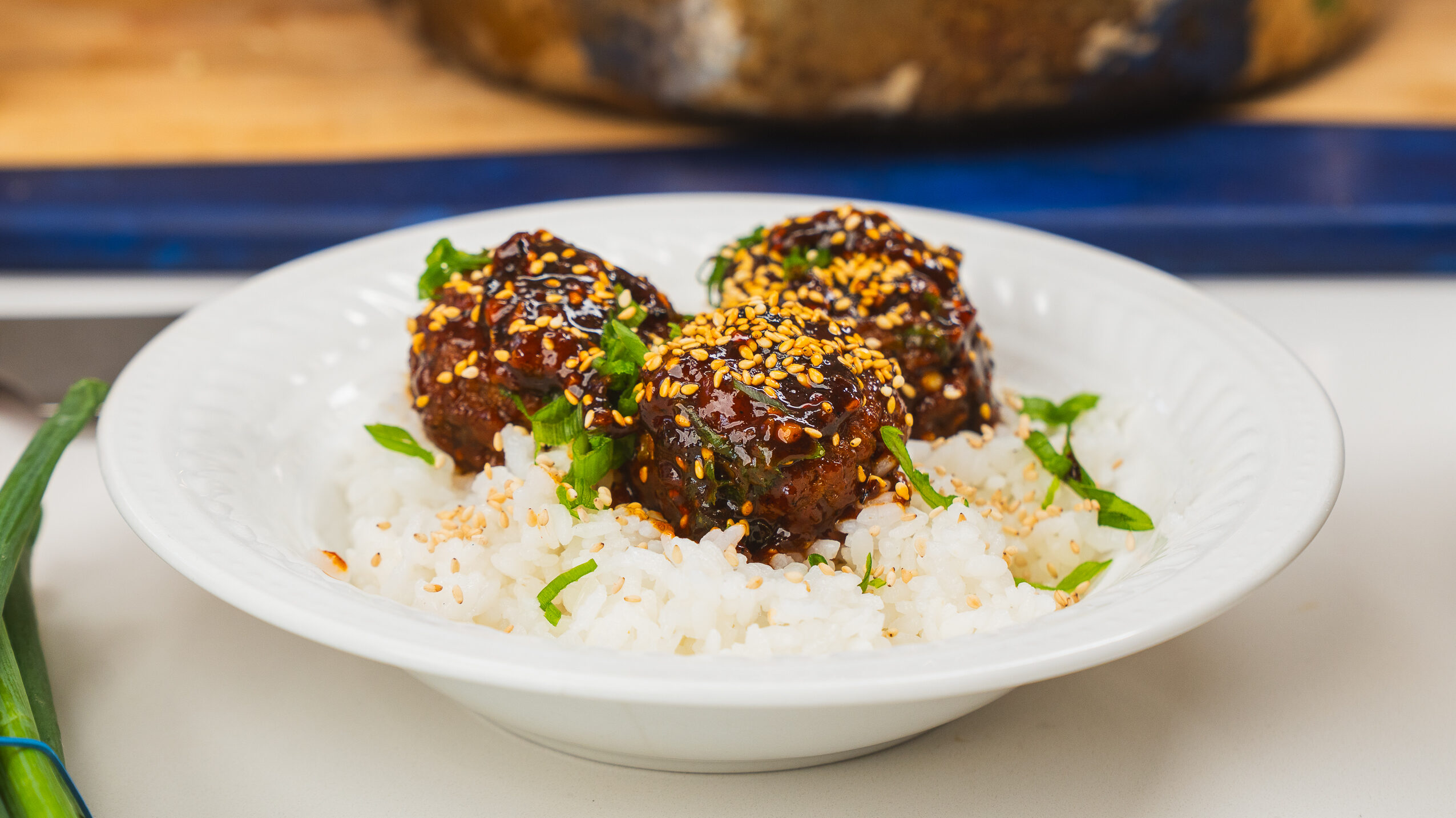
Tips & Tricks to Nail This Korean Meatball Recipe
1. Don’t overmix the meatball mixture: You want everything to be just combined so the Korean BBQ meatballs stay tender. Overworking the meat will make them tough.
2. Be mindful of the sugar content: Because of the maple syrup, the meatballs can burn if the heat is too high. Keep it at medium and take your time—slow and steady wins here. You want a nice sear without scorching that maple.
3. Gochujang is your new best friend: If you’ve never cooked with it, this fermented chili paste is essential in Korean cooking. It brings heat, sure—but also depth and a little sweetness. You can find it in most grocery stores now (check the international aisle), or snag it online.
4. Sauce thickening tip: Use a cornstarch slurry to finish the sauce. This gives it a glossy, sticky BBQ coating. It clings to the meatballs and makes every bite better.
5. Make it your own: Swap in ground chicken or pork if you like, or make it vegetarian with a meatless ground. You could even roll them a bit smaller for appetizer-sized bites. Mix everything in a large bowl and you’re good to go.
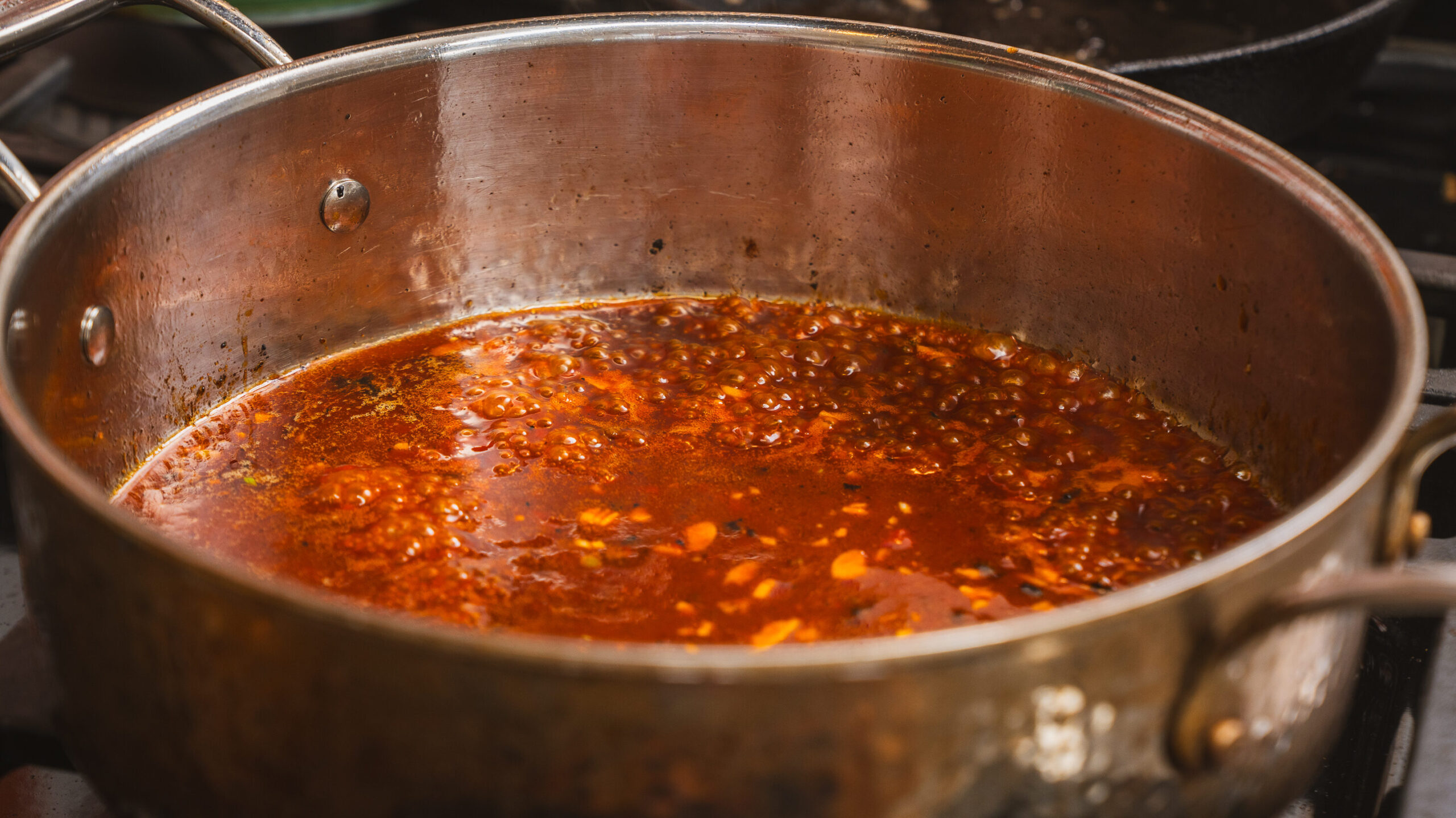
Korean BBQ Meatballs: Ingredient Breakdown:
Ground beef – I love beef here for its richness and texture, but you could easily swap in ground chicken, pork, or even turkey if that’s what you’ve got in the fridge. Just keep an eye on the cooking time—leaner meat mixtures can dry out faster.
Garlic + ginger – These two are the aromatic power duo in any Asian meatballs situation. Fresh is best for both. Grate the ginger and finely mince the garlic for even distribution in every bite.
Green onions – Adds freshness and a subtle bite. Fold some into the mix, and save a little for garnish to bring everything to life visually and flavour-wise.
Soy sauce – Salt and flavor in one hit. I use regular soy sauce here. If you’re gluten-free, sub in tamari.
Maple syrup – A little sweetness to balance the heat and salt. Plus, we’re Canadian. It just makes sense.
Sesame oil – Nutty and aromatic, it’s a must-have in the sauce and the meatball mix.
Panko – Japanese breadcrumbs that keep things light and juicy. If you don’t have panko, regular breadcrumbs work, too.
Egg – Helps bind the mixture together. No dry meatballs on my watch.
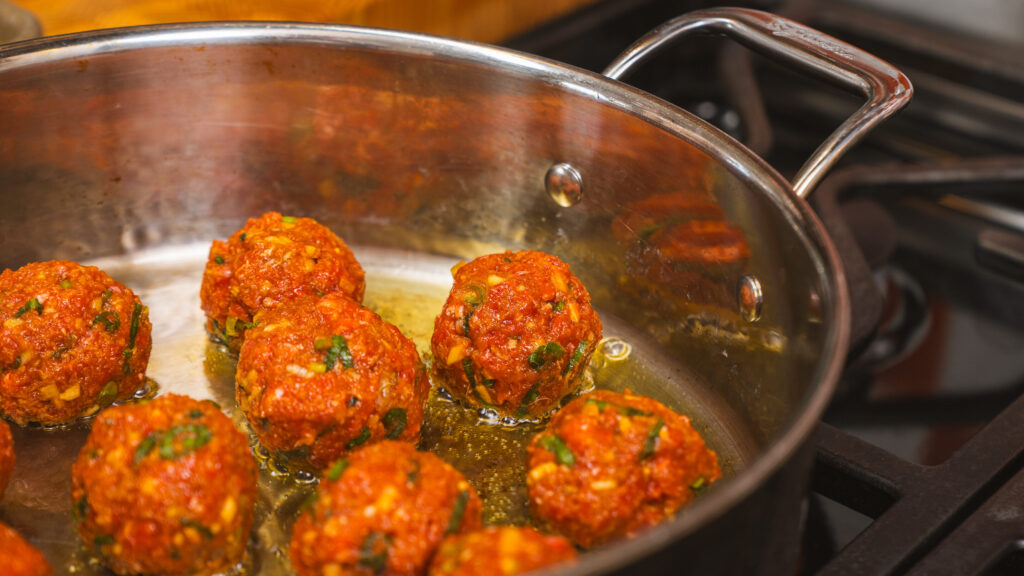
How to Serve These Korean BBQ Meatballs
Honestly, you’ve got options. I love them best with sticky jasmine rice, a sprinkle of toasted sesame seeds, and some finely sliced green onion over top. That’s your classic bowl situation, and it never misses.
You could also:
- Toss ’em in lettuce wraps for a low-carb version.
- Stick ’em on skewers for a party snack.
- Add some quick-pickled carrots or cukes for a bit of crunch and acid.
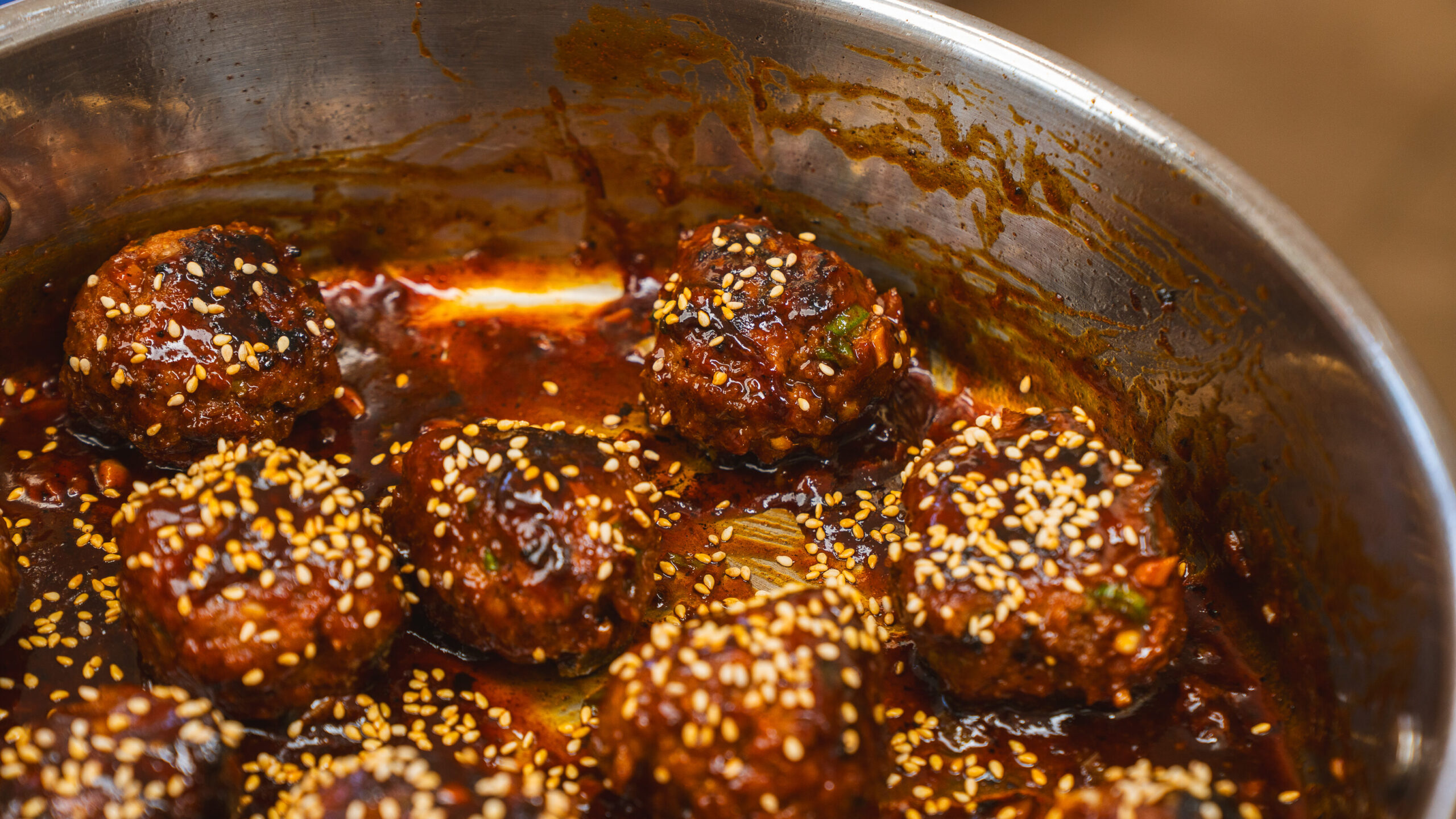
Final Thoughts
This Korean BBQ meatballs recipe brings the flavour and the fun without the fuss. One pan, minimal cleanup, and enough wow-factor to make you feel like a kitchen rockstar. If you’re new to Korean recipes or just want to switch up your weeknight dinners, these asian meatballs are a great entry point.
So light that burner, grab that gochujang, and let’s make magic happen.
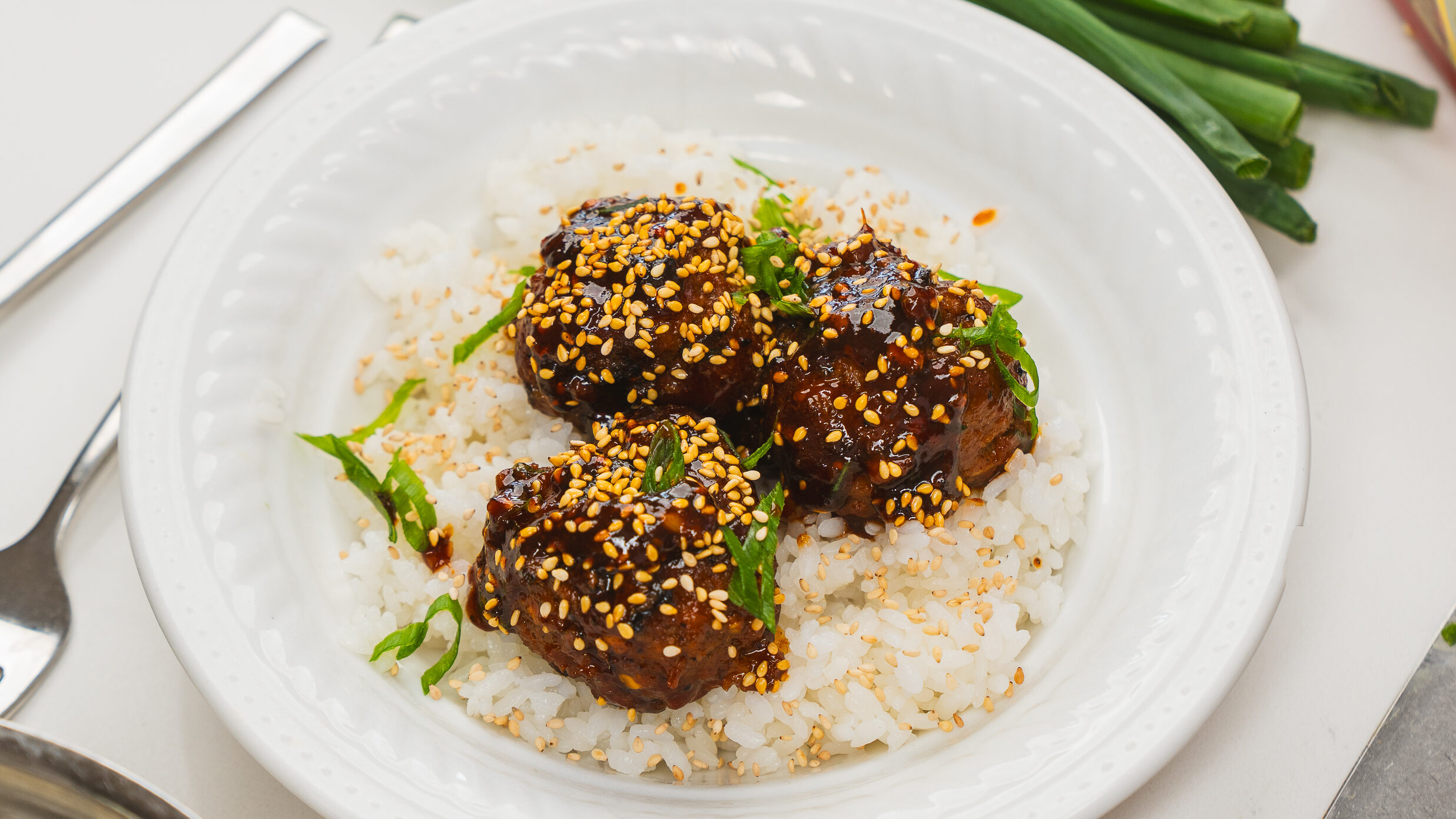
Other Recipes You Will Love!
Asian Beef Noodles with Ginger
Rate & leave a comment
18 Comments
— End of comments —
— No more comments to load —



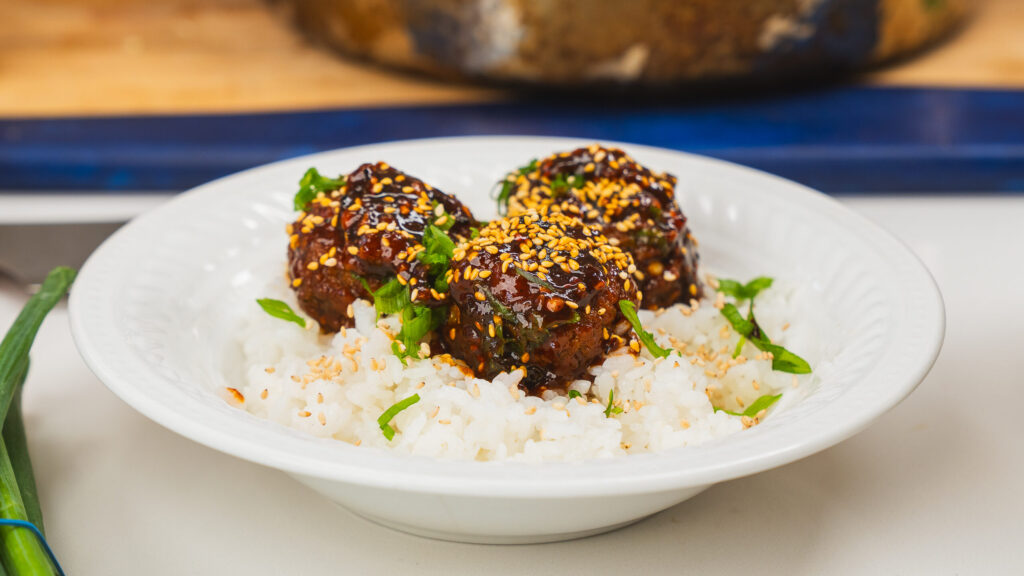



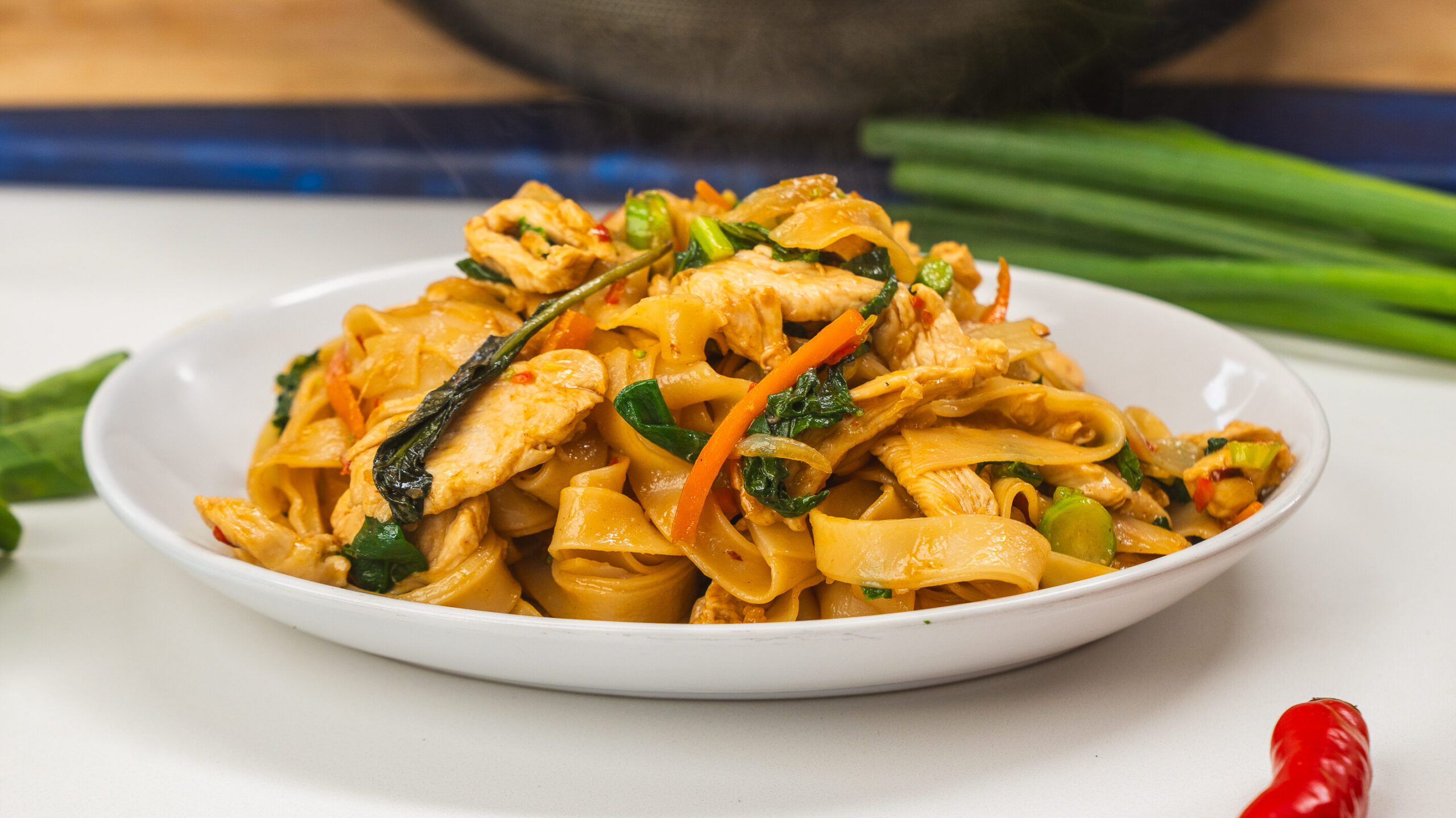
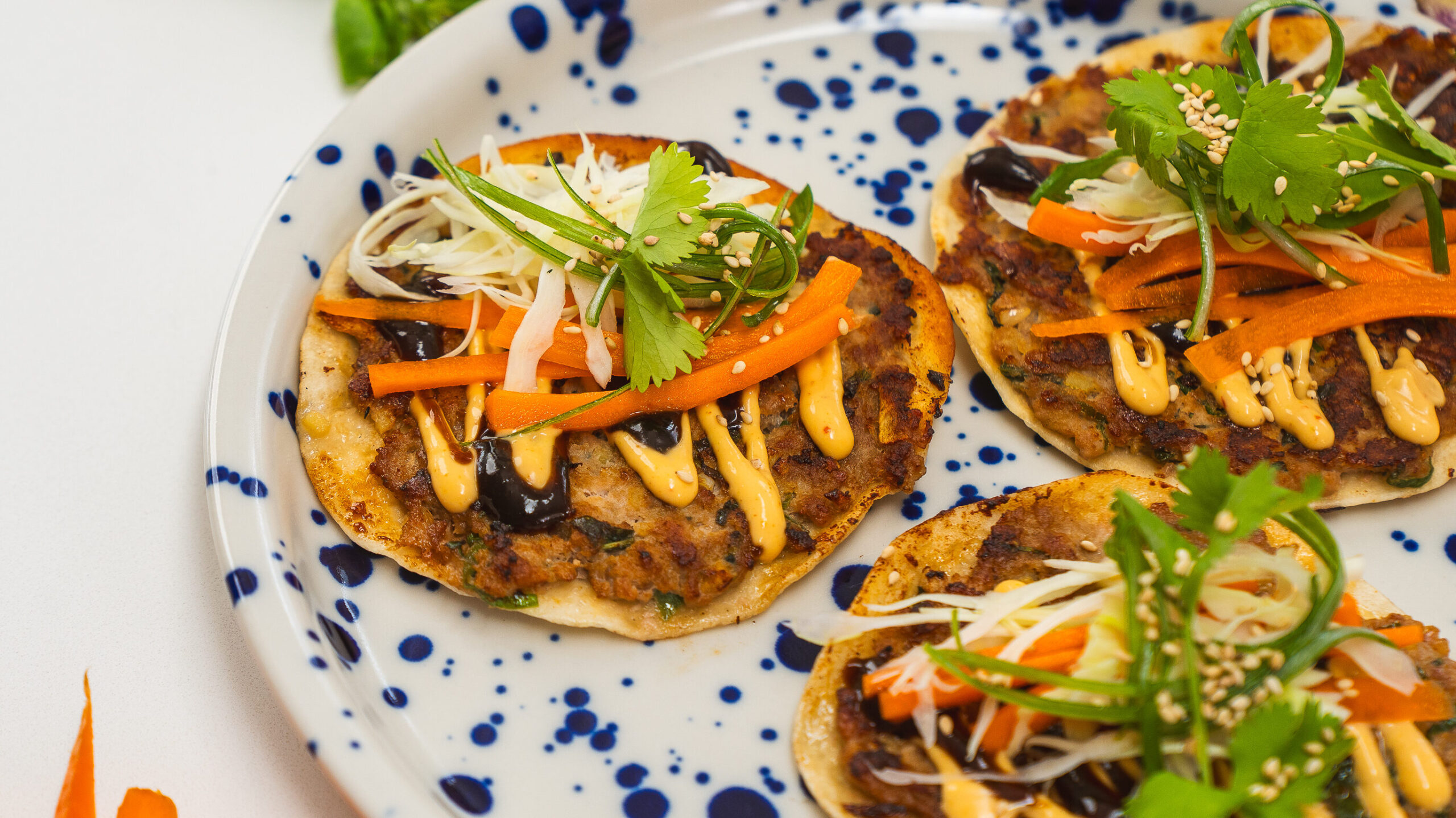


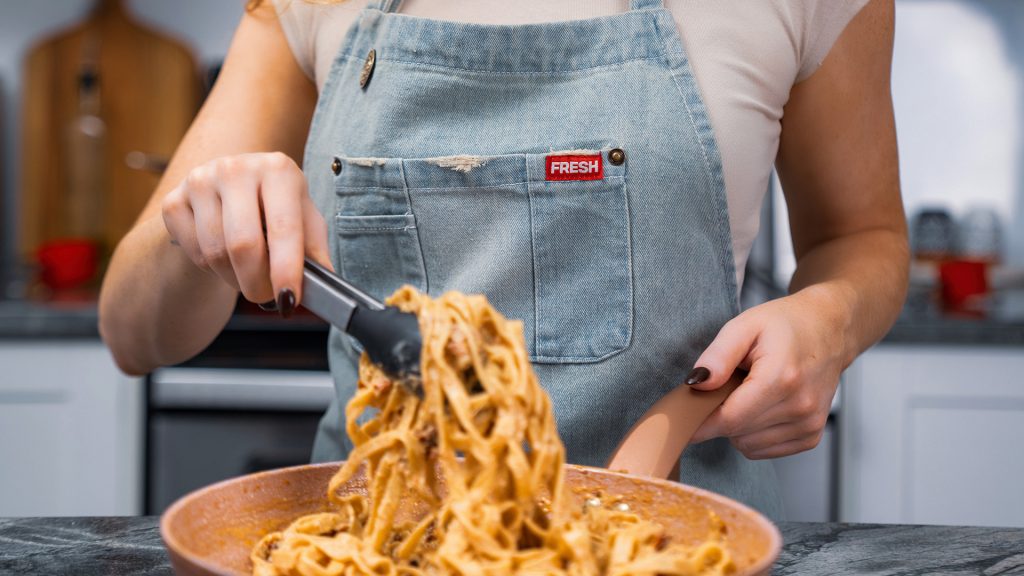
Tasty but found the sauce too salty. Would thinning the soy down help with this?
Hi Sandra! If the sauce was too salty, you’ve got a few easy ways to tone it down:
You can thin the soy sauce with water (start with 1–2 tbsp and adjust to taste).
Use low-sodium soy sauce if you’re not already—makes a big difference.
Add a bit more maple syrup or rice vinegar to balance the saltiness with sweetness or acidity.
So glad you found it tasty overall—thanks for the feedback! Let me know how it goes next time!
This looks delicious, but any suggestions on how to freeze?
Great question! These Korean BBQ meatballs freeze really well—here’s how to do it:
Fully cook the meatballs, let them cool completely.
Store in an airtight container or freezer bag.
You can also freeze the sauce separately or combined—both work!
Reheat in a pan or microwave until warmed through.
Let me know how they turn out!
These were awesome…I used something called ‘coconut secret’ instead of soy sauce as we’re on a salt restricted diet…also have switched out the meat with tofu ‘nuggets’
Definitely on the rotation….
Love those swaps—so smart for a low-sodium, plant-based twist! So glad they made it onto your rotation. Thanks for sharing your version!
Amazing! I used oats to make it gluten free but it turned out fantastic. So much flavour.
Love that swap, Ayako—great way to keep it gluten-free! So glad you enjoyed them, and thanks for sharing your swap.
These were flavourful. I served them over cauliflower rice. However, they were a tad salty. I used tamari but I’m not sure that is saltier than soy sauce I think I’ll try these again, but want to lower the saltiness.
Hi Maria,
Soy sauce is generally a bit saltier than tamari, but if you still found the recipe too salty, try cutting the tamari down to 1 tablespoon instead of two—that should help!